Report From Rwanda: Dispatch I
Posted on June 27, 2015
With occasional access to email these last weeks, the response to my standard “Sorry for the slow response, but travelling in Rwanda with spotty connectivity at times” email opening has been some variation on “Rwanda? Really? Not a place I would have guessed.” Prior to our arrival here, I might have had the same response if the roles had been reversed. After all, most people know Rwanda from the horrific 1994 Genocide, when somewhere between 1 and 3 million people were killed in a three-month bloodletting that was unimaginably barbaric. What could this place be some 20 years later, still one of the poorest 20 countries on the planet, and in a tough neighborhood of violent and unsettled countries like the Democratic Republic of the Congo and Burundi.
Our response after two weeks of crisscrossing this tiny country, the most populous in Africa, is “Astonishing.” Astonishing and complex and still very much a work in progress. I’ll share my sense of the place in two blog posts: this one focusing on the positive and a second focusing on the negative, not because there is some clean dichotomy at work here, but because it is my way of making sense of the place where the amazingly positive sits side by side with the painfully negative and they are of course, inextricably bound. But to capture that complexity is to write a sentence only to follow it with “But one must also consider…” A better analyst and writer would be up to the task, but I am not him.
So today, the positive.
I begin with our main reason for being there: the first graduation of SNHU degree holders (they complete the College for America program) from our partner institution, Kepler University. We built up to the ceremony with workshops from some of our team: on entrepreneurialism, race in America, and navigating different business cultures, then a panel of our SNHU students on attending college in the US, and then a wonderful celebratory graduation that included drumming and dancing (lots of new ideas for our next graduation ceremony!). SNHU students stayed with Kepler students in their accommodations, learning the joys of the bucket shower and real life for their peers, and I suspect they forged life-long friendships. The Kepler students, very smart and very poor, were remarkable. In the various sessions we did for them, they asked excellent questions and displayed a level of critical thinking skill that was genuinely exceptional. Any school would be proud to count them among their graduates, as are we. These impressive young men and women are the future of Rwanda.
Now the country.
Rwanda in 2015 is in many ways a creation of its remarkable president, Paul Kagame, and a reaction to the Genocide. A three-year-old refugee from the periodic Hutu violence against his Tutsi ethnic minority, Kagame came back to Rwanda 34 years later as the Major General leader of the Rwandan Patriotic Front, invading the country, defeating the Rwandan national army (armed by the US and France, among others) ending the Genocide, and declaring a government of national unity. In 2000, he was elected Rwanda’s fifth president and has presided ever since and has almost single handedly shaped contemporary Rwanda, with enormous support of both Tutsis and the Hutu majority, winning 79% of the vote in the last election (while there are credible reports of some voting irregularities and suppression of the opposition, the election has been generally assessed as legit and no one doubts the breadth of Kagame’s support).
What has he accomplished?
One prominent local ex-pat, a former financier and now foreign government representative, told me his Vision 2020 Strategic Plan for the country is the single best strategic plan he has ever seen. Even taxi drivers cite it. It sets out ambitious goals for the country to become a middle-income nation, with an emphasis on gender equality, fighting corruption, technology, environmental sustainability, and with ambitious goals around poverty reduction, increasing income, and improving literacy rates. Many scoffed at the original goals, but Rwanda is outpacing the plan and is even considering new higher targets.
And it shows. Kigali, the capital, is immaculate, orderly, and safe. Having visited cities like Nairobi, Dar Es Salaam, Cairo, Delhi, and others, hilly and green Kigali feels like none of them. The city, and the countryside for that matter, is immaculate and certainly cleaner than any American city you might name. The country outlawed all plastic bags, the scourge of the countryside in one poor country after another. Roads are excellent and where they are not (as in the western part of the country), massive road building is underway. Crosswalks are set off with blinking lights. Every public area is well landscaped. Drainage gutters are deep, lined with well-built stone, and manage the country’s heavy rainfall. The whole country seems vibrant, busy, and industrious. Kagame famously said that Rwanda did not need foreign aid to be clean and to plant trees. Once a month, all other work stops and communities and neighborhoods come together to tackle local projects, like cleaning up parks, repairing sidewalks, or fixing up a school. These are also opportunities to identify issues, people in need, or get messages to those in charge.
There is a pervasive presence of security forces, whether heavily armed police or military, throughout the countryside, ensuring order and security. In conversation after conversation, Rwandans cited that as their first desire. To never return to the violence and disorder of their recent past. In one telling incident, one of our three vehicles was stopped for speeding in the countryside (police speed traps are common, itself a rarity in Africa) and our driver was politely and professionally given a ticket. Emma, in the car, was amazed, remembering her time in Ghana when taxi vans were constantly stopped and shaken down for a small bribe (a larger one if a foreigner was in the car, since the police knew the driver was gouging that passenger). In Rwanda, there is little tolerance for corruption, according to everyone with whom we spoke, and the World Bank has ranked it one of the least corrupt countries in Africa. Two government ministers are doing time for corruption and lists of emergency numbers include a number if you have been mistreated by police. St. Louis and Charleston might take notice.
While the Genocide was twenty years ago, there is a real sense that an outside threat exists. The genocidaires, as the militia and military perpetrators are called, are active in neighboring Congo and when we trekked Volcanoes National Park (which covers Rwanda, Uganda, and the DRC) we had soldiers with AK-47s accompanying us, ostensibly to defend against cape buffalo (fierce and aggressive animals), but one guide finally conceded that rebels still cross the border and that the soldiers are there to protect tourists, the number one revenue source for the country. Our drivers told us that common people have a high degree of trust in the military. Compared to the cities named above, Kigali and Rwanda felt very safe and in a place where extreme poverty persists, the most likely crime is theft, not assault. At least for visitors (we did see many projects around GBV, or Gender Based Violence, as they use the phrase).
Indeed, tourism dollars have a huge impact on the local villages. Former poachers now work as porters and trackers or in the various cultural villages, which feel a bit hokey, but worth supporting. Well maintained schools and clinics have been built and we were reassured that some goodly portion of tourism dollars stay local and there was ample evidence of that fact. Rwanda Eco-Tours, the tour company we used for our country-wide travels, is committed to supporting the communities that surround the parks and builds into the per-person cost of the trip the gift of a goat to a local family, so we presented 13 goats to 13 families.
Everyone in the country has health insurance at a very low cost and while ex-pats tells us it is not near western standards, it is a point of pride with Rwandans (one reminded us it is an achievement not yet realized in America). Indeed, child mortality rates have come down and we saw much less of the malnourished, distended bellies on children in the poorest areas than we saw in similar villages in Tanzania or Kenya, both much wealthier countries. Others have told us that child malnourishment is a bigger problem than it looks, but we’ve seen worse.
That might be because Rwanda is an agricultural wonder. With 12 million people squeezed into an area less than half the size of Scotland, every inch of land is farmed and it is a verdant, green place where almost anything would grow. Rwanda is a land of endless hills and every one of them is terraced and growing potatoes, bananas, beans, cassava, melons, sorghum, and rice, as well as fabled coffee and tea. We had wonderful meals throughout our stay and Kigali is starting to get a small handful of higher end places, coffee shops, and bakeries. We had some of the best pizza anywhere in Kigali.
Rwandans may be among the hardest working people on earth, most employed as farmers and in their fields from early to late, no matter the local ecology, which is endlessly varied. We saw ancient rain forests in the dense Nyungwe National Park (where we did a heart stopping canopy walk and trekked to see chimps), alpine meadows with cattle grazing, the lovely shores of Lake Kivu, Serengeti like plains in the far east, home to Akagera National Park, the cone shaped Verunga mountains in the northwest, dormant volcanoes that are home to some 800 Mountain Gorillas (where Diana Fossey worked and died). Simply, it is one of the most beautiful countries we have ever seen. Aside from the parks, it is also the most crowded country on the continent and no matter where we drove, there was always people and another plot of cultivated land.
But, oh those parks. The highlights of our trip included a multitude of antelope, the giraffes, hippos, and the elephants of Akagera, jaw dropping for our students who were seeing this world for the first time and still incredible for those of us have done safari before. We lucked upon an amazing event that none of our drivers or our guide had ever seen: a herd of 16 elephants swimming across a lake. A big male went first to make sure it was safe, others then followed, keeping the babies safe from crocs by putting them in the middle, and the rear brought up by three adolescents who played and sprayed and wrestled their way across, having a ball along the way. The Rwandans kept exclaiming, “This is very special”.
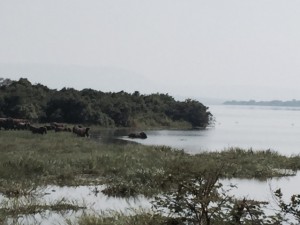
Trekking into Nyungwe to see chimps was harder work, though we had porters (we were encouraged to hire them, as many of them were former poachers and this is a way of persuading them to support tourism and the animals instead) that not only carried backpacks, but often pulled and pushed us through the thick bush. We were happy for their assistance. They were incredibly helpful and the $12 we paid each is a good wage in an area where many make $2 a day. We heard the chimps before we saw them, hooting and screaming to each to warn of our approach, and trackers sent out ahead of us led us to their area. Suddenly, we were surrounded by acrobatic chimps swinging through the trees with amazing agility and grace. Babies chased each other across limbs, defying gravity, and a large male went tearing by us.
We also did the vertigo inducing canopy walk, a swaying bridge 120’ up into the rain forest canopy.
Nyungwe is rain forest like you remember from Tarzan movies, dense and encompassing and even a little claustrophobic. One of the most ancient forests in Africa, it is home to 16 species of primates, 200 orchid varieties, and supplies 70% of the country’s water.
We thought it an experience not to be surpassed, but we then visited the famed mountain gorillas of Volcanoes National Park. The trek, led by park guides and the aforementioned soldiers was tough: straight up the slippery, densely vegetated slope trails, stinging nettles on each side (gloves and thick clothing was a must), and the altitude leaving us all panting (we came upon our gorillas at 9,000’). But then we came upon the family, led by an enormous silverback, and the whole ordeal was worth it. We were surprised by how close we could get to the gorillas and how close they came to us. Habituated to visitors (there are ten families that are visited no more than once per day and only for an hour), they mostly ignored our presence. Though one wrapped his arms around trustee Pete Worrell’s legs, another pushed his way through our group, stepping on Kyle Thomas’ foot, and a silverback flung out one enormous arm sending a guide flying (he and the others laughed).
We saw newborns, including one nursing (rare to see, we were told), youngsters playing, strong blackbacks feeling their oats with chest beating, and then the enormous silverbacks that rule each family with imposing presence.
The guides practice a low hum-like sound that imitates the gorilla’s signal of friendliness. As we approached one older silverback, he returned the sound and we knew he would tolerate us. The time spent with them was sublime, especially in those moments when they locked eyes with us (we were told not to hold that gaze for long, as we were supposed to communicate submission). It was one of the most powerful experiences any of us have ever had in the natural world.
The guides on all our outings were exceptional and we learned a lot about the animals, the forests, Rwanda’s conservation strategies, and we delighted in the delight trackers and porters, many former poachers, exhibited when we came upon any animal. The good news is that the population, once down to about 200, has rebounded and now numbers 800. None has ever survived in captivity and zoos have agreed to stop trying (the gorillas you see in zoos are lowland gorillas).
It was a life experience I think we will all treasure.
As great as the animals were, the Rwandans we met were better. Well, at least as good. Our trio of drivers – Robert (the serious leader of the group), Charles (the older, gentle one), and Sam (the playful easily distracted youngster of the group) – became our friends over our 12 days together, covering hundreds of miles of Rwandan countryside. The staff at the lodges were incredibly warm and friendly and so quick to help with any need. At our last dinner at the Gorilla Mountain View Lodge, Chef Alfred made us a special thank you cake, and he led a singing, dancing line of staff to present it. In truth, we saw little of that connection among the other guests, and I think the innate friendliness and informality of this American crew won the group a lot of fans (while most of the other guests seemed to assume an imperious colonial attitude to the Rwandan staff). I was even guest bartender one night in the lodge’s cozy bar, teaching the Rwandan staff new drinks like the Jean-Paul (named for the bar manager), the Cuban Missile, and the Mango Maiden.
A long-time Africa hand quipped that Rwanda is “Africa-lite.” There is a kind of macho Africa adventure travel that revels in the tough challenges: dangerous places, seedy accommodations, more off-the-grid, and exotic. I like to think that we saw a version of what Africa might be: safer, more ordered, more responsible, more prosperous. Even if that vision is still very young and still fragile, with a long way to go, it feels like Rwanda is getting it right in many ways (in my next blog, I’ll talk about what feels troubling). Indeed, in many ways, we liked that we saw Rwanda at this still formative stage. It does not yet have a robust, highly westernized tourism infrastructure. It still has miles of bone-jarring roads (which provide an “African massage,” as our drivers joked) and bathroom breaks in the rural areas were….well, their own adventure. Rwanda may be Africa-lite, but it is still Africa and it pulled everyone out of their comfort zones in really good ways.
For me, the greatest satisfaction came from watching our students learn, engage, struggle, and have their horizons dramatically broadened. In one-on-one conversations, each talked about these three weeks as life-changing. One joked that he will never again tolerate a friend saying they’re “Starving” or “Can’t find anything to wear.” “Let me tell you about what it means to really go hungry or to have only rags to wear!” he imagines his response. I think it is fair to say this was as powerful and transformative an educational experience that any of these students have ever had. That alone was worth the time and trouble and wearying journey.
Let me end where I started: if someone tells me that they are thinking of a trip to Africa, I’ll urge them to include Rwanda. It was far richer and complex and positive an experience than I could have imagined, a place to which I’d happily return. Especially if I could be the one to be hugged by a gorilla!
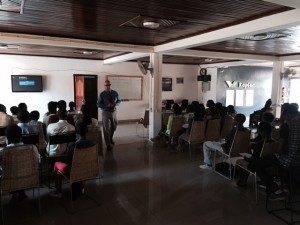
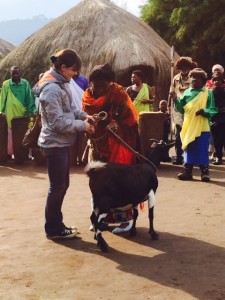
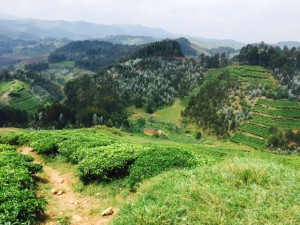
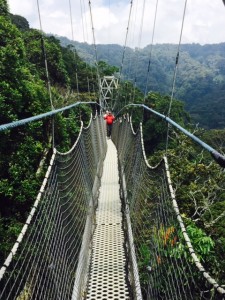
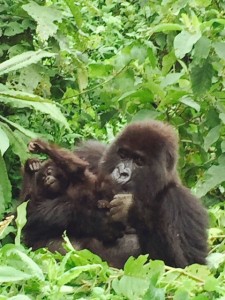
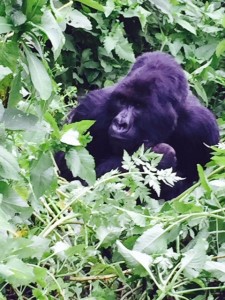
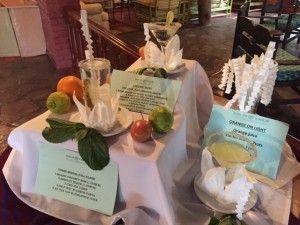
Paul, I just finished reading this post in preparation for a video MYC will be shooting later this month. Thank you for this richly detailed account of your trip and eye-opening education on Rwanda. I thoroughly enjoyed it!